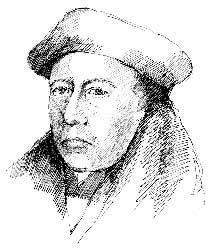Nottinghamshire
ROBIN HOOD ∗ MAJOR OAK
Robin Hood, a very English hero.
NOTTINGHAMSHIRE FOLK
Thomas Cranmer ∗ The Reverend William Lee ∗ D.H. Lawrence
∗ William Brewster ∗ Nicholas Hawksmoor ∗ Erasmus Darwind ∗ Eric Coates
Nottingham
Nottingham and Sherwood Forest will for ever be associated with the best-loved and most famous English folk hero of them all, ROBIN HOOD. Wielding an English longbow, battling a Norman king and defending downtrodden English folk from tyrannical French aristocrats such as Guy de Gisburne, his story mirrors the struggles against arbitrary authority that were the background to medieval England, and led to Magna Carta.
Like King Arthur, Robin Hood was probably an amalgam of several real characters. One suggested candidate is Robert FitzOdo (1160–1247), Earl of Huntingdon, born at Loxley in Warwickshire (Robin Hood is sometimes referred to as Robin of Loxley), and buried in the churchyard there. He was outlawed at the end of the 12th century and his lands were transferred to Ranulf, Earl of Chester, an event that is mentioned in William Langland’s Piers Plowman, written in 1377, which includes the earliest known literary reference to Robin Hood.
There is another Loxley (spelt Locksley), in Barnsdale Forest in Yorkshire, which could be the birthplace of Robin Hood, and indeed the early ballads talk about Robin of Barnsdale. This might favour the idea that Robin Hood was Robert Hood (1290–1347), who was outlawed by the court in Wakefield for supporting the Earl of Lancaster against Edward II at the Battle of Boroughbridge.
A further suggestion is that he was Robert, Earl of Huntingdon, the great grandson of King David of Scotland and a kinsman of Robert the Bruce, who was dispossessed of his lands by King John.
While Barnsdale Forest has some claims to be Robin Hood’s stamping ground, most stories place him in Sherwood Forest, which in his day covered over 100,000 acres (40,000 ha) of the heart of England, and although it has shrunk to just 450 acres (182 ha) today there are still many places associated with Robin Hood and his Merry Men that can be visited.
Edwinstowe
A good place to start is St Mary’s Church in the pretty village of EDWINSTOWE, set in the heart of Sherwood Country Park beside the River Maun.
Edwinstowe is named after the Saxon King Edwin of Northumbria, whose kingdom at that time stretched from the River Trent to Edinburgh (Edwin’s borough). Having been converted to Christianity by his wife Princess Ethelburga of Kent, Edwin marched south in 633 to fight the pagan King Penda of Mercia, and was killed during the ensuing Battle of Hatfield, at a small settlement in Sherwood Forest now called Cuckney. His body was secretly buried in a forest clearing to conceal it from Penda, and when Edwin’s followers returned to take Edwin to his final resting-place at Whitby Abbey, a wooden chapel was raised over where he had lain – ‘Edwin’s Holy Place’, or Edwinstowe.
In 1175 a stone church was built to replace the wooden chapel, one of many churches put up by Henry II as penance for the murder of Thomas à Becket. It was here, at ‘the church in the forest’, that Robin Hood and Maid Marian were said to have been married.
Buried in the churchyard to the west of the tower is a distinguished incumbent of St Mary’s, the REV DR EBENEZER COBHAM BREWER (1810–97), who compiled Brewer’s Dictionary of Phrase and Fable.
Major Oak
Not a mile from the church at Edwinstowe is Robin Hood’s main hideout, the MAJOR OAK, named after the antiquary Major Hayman Rooke, who wrote about the tree in 1790. It is one of the oldest and biggest oak trees in England, and stands in its own clearing with smaller oaks and silver birches keeping a respectful distance. In the hollow trunk, 30 ft (9 m) round, Robin Hood and his men would hide and plot their next ambush.
The oak tree has long been a symbol of English strength and resilience – with Charles II having hidden in an oak tree and English sailors having ‘hearts of oak’ – and for Robin Hood to make an oak his fortress is somehow fitting.
Further south near Newstead Abbey is the village of BLIDWORTH, where Maid Marian is said to have lived before her marriage to Robin and from where she was escorted to Edwinstowe by Will Scarlet – who may lie in the churchyard. A little way to the west in lovely Fountaindale is Friar Tuck’s Well, near a moated area where the Friar had his home, and where he and Robin disputed the right of way, with Robin ending up in the water. A footbridge used to carry the public path across the moat and it may have been on this bridge that Robin and Little John fought.
Further south again is PAPPLEWICK, where Robin Hood stabled his horse, near the main route through the forest, the King’s Great Way, in a cave guarded by yet another oak tree. The minstrel Alan a Dale married his ‘fair lady Ellen’ in the original 12th-century church at Papplewick and may be buried under the present church.
St James’s church at Papplewick, built in the late 12th century, was another of Henry II’s ‘penance’ churches like that at Edwinstowe. It was restored in 1795 by the Hon. Frederick Montagu, Squire of Papplewick Hall, up on the hill. Inside, at the east end, is his ‘squire’s pew’ retaining its private fireplace – Montagu would rattle the coals with his fire iron if he thought the sermon was going on too long.
Well, I never  knew this
knew this
about
NOTTINGHAMSHIRE FOLK
Thomas Cranmer
1489–1556
THOMAS CRANMER, THE FIRST PROTESTANT ARCHBISHOP OF CANTERBURY, was born in ASLOCKTON, a small village in the Vale of Belvoir east of Nottingham. Although the old manor house where he came into the world has gone, there is a moated hillock in a field near the site known locally as ‘Cranmer’s Mound’. Here, as a boy, he would sit and admire the view, while listening to the bells of Whatton church ringing across the river.
Cranmer studied at Cambridge and took Holy Orders in 1523. He came to the attention of Henry VIII when he suggested that the King should ignore the Pope and allow English churchmen to decide on the legality of his marriage to Catherine of Aragon, taking their guidance from the Scriptures. On becoming Archbishop he declared Henry’s marriage to Catherine illegal and publicly married Henry to Anne Boleyn.
Cranmer was a leading figure in the English Reformation, and a founder of the Church of England. He urged the Dissolution of the Monasteries, believing that the money would be better spent on religious teaching and education, and strongly supported the translation of the Bible into English, so that more people could read the Scriptures and learn for themselves. In 1545 he wrote the first Litany in the English language, which is still used today, while his greatest work was the BOOK OF COMMON PRAYER, published in 1549, which many people think contains some of the most beautiful written English ever composed. Used day after day by millions of English churchgoers during the later 16th century, Cranmer’s Book of Common Prayer spread a shared English language across the country, undoubtedly contributed to the brilliance of Shakespeare, and gave to English writers and poets the richest and most adaptable language in the world as their tool.
Cranmer’s leading role in the Reformation and his annulment of Henry VIII’s marriage to Queen Mary’s mother Catherine of Aragon earned the hatred of the Bloody Queen (Mary, Mary, quite contrary) and he was burned at the stake in Oxford in 1556.
The Reverend William Lee
1560–1610
An early pioneer of the Industrial Revolution, THE REV WILLIAM LEE, was born in CALVERTON, a large straggling village at the foot of the hills between Nottingham and Southwell. In 1589 he patented THE STOCKING-FRAME, the first piece of apparatus ever made that could produce looped or knotted fabric, and which could make 12 stockings, woollen or silk, for every one knitted by hand. It was an astonishing invention that pre-dated the machinery of the factory age by nearly 200 years, and was the prototype for every machine in use in the world today.
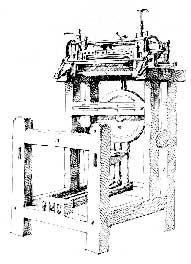
The story goes that Lee was driven to create his frame so that his sweetheart might spend less time knitting and devote more time to him. Unfortunately, Elizabeth I refused to recognise the stocking-frame, afraid that it might cause unemployment amongst the hand-knitters, which indeed it did, and Lee had to go to France for patronage. The frames made there were eventually returned to Nottinghamshire and led to the growth of the county as a centre for the hosiery trade. Like so many brilliant men, Lee was no businessman and died a pauper in Paris, where he lies in an unknown grave, having made nothing from his invention that would one day create untold wealth for England and millions of Englishmen.
D.H. Lawrence
1885–1930
Nottinghamshire village life colours and infuses the novels of controversial writer D.H. LAWRENCE, who was born the son of a coalminer in EASTWOOD, where his birthplace, 8A Victoria Street, is now a museum in his memory. Lawrence’s semi-autobiographical Sons and Lovers, published in 1913 and set in a coalmining village, is regarded as the first English novel to originate from, and focus on, the English working class.
Not far from his home is Haggs Farm, where Lawrence’s first love Jessie Matthews lived. She appears as Miriam in Sons and Lovers, as does her farm – ‘Miriam’s farm, where I got my first incentive to write’.
The sexually explicit nature of his work, particularly Lady Chatterley’s Lover, shocked the censors of the day and led to a celebrated trial that rewrote the obscenity laws as applied to English literature. Although published in Italy in 1928, Lady Chatterley’s Lover was banned in Britain for its obscene content until 1960, when Penguin sought permission to publish it, along with Lawrence’s other works, to celebrate the 30th anniversary of his death. After a six-day hearing at the Old Bailey objections to the publication were overruled, and within a year the book had sold over two million copies.
Born in Nottinghamshire
WILLIAM BREWSTER (1567–1644), leader of the Pilgrim Fathers, was born in SCROOBY. His descendants include Katherine Hepburn, Bing Crosby, Richard Gere, Chevy Chase and the 12th US President, Zachary Taylor.
NICHOLAS HAWKSMOOR (1661–1736), architect, known for Easton Neston in Northamptonshire, the west towers of Westminster Abbey and six London churches, was born in EAST DRAYTON.
ERASMUS DARWIN (1731–1802), inventor, founder of the Lunar Society and grandfather of Charles Darwin, was born in ELSTON.
ERIC COATES (1886–1957), composer of the signature tune for Desert Island Discs, was born in HUCKNALL.


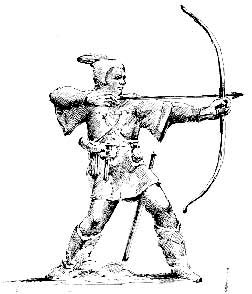

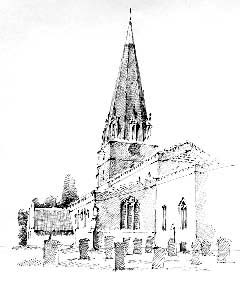
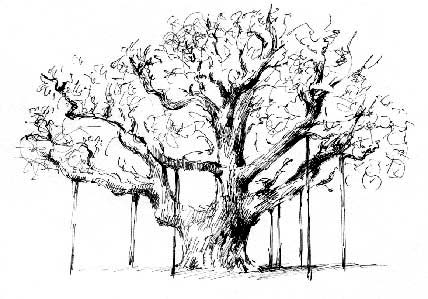
 knew this
knew this 